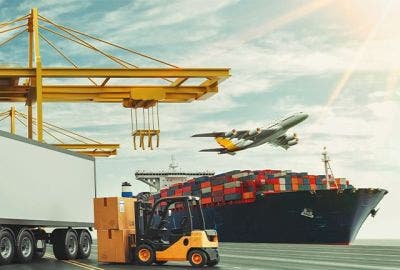How Businesses Can Cut Packaging Costs While Boosting Efficiency 
In a competitive market, businesses are under constant pressure to reduce costs, improve efficiency, and meet sustainability targets while delivering high-quality products to consumers. One often overlooked area of cost reduction is packaging. Packaging plays a crucial role in product protection, consumer appeal, and shipping logistics—but it doesn’t have to be an expensive aspect of operations. By implementing a few strategic changes, companies can significantly reduce packaging-related costs, streamline their supply chain, and even enhance their sustainability efforts.
Here are four key packaging strategies business-to-consumer companies can reduce costs.
Lightweighting Packaging
Lightweighting refers to the process of reducing the weight of packaging materials while still ensuring product protection. This simple change can have a dramatic impact on a company’s bottom line. By using less material, businesses can reduce their material costs, lower shipping expenses, and improve pallet efficiency, resulting in more units per shipment and fewer deliveries.
Example: One of the most effective ways to reduce weight is by switching from heavier materials like glass to lighter alternatives such as PET plastic. For instance, switching from glass bottles to PET plastic can reduce the weight of the packaging significantly, leading to lower transportation costs while still providing adequate protection for the product.
Optimizing Supplier Location
Another strategy for cutting packaging costs involves optimizing the location of your suppliers. By sourcing packaging materials from suppliers who are closer to your production or filling facility, you can reduce freight costs and minimize lead times. Local suppliers often offer more competitive pricing due to shorter shipping distances, and they can help prevent costly delays in your supply chain. TricorBraun has locations spanning the East Coast, Midwest, Southwest, and West Coast, having you covered wherever your business operates. Not based in the United States? TricorBraun has supplier partners worldwide so we can help brands wherever they or their filling locations are.
Example: Partnering with a regional supplier rather than one located across the country or overseas can eliminate the high costs associated with long-distance shipping. This not only reduces freight charges but also cuts down on environmental impact, as shorter transportation distances result in lower carbon emissions.
Rationalizing Packaging Sizes and SKUs
Packaging size rationalization involves standardizing the packaging across various products, which can reduce the complexity of production processes and save money. By rationalizing packaging sizes, businesses can minimize tooling costs, reduce the need for multiple molds, and lower inventory holding expenses.
Example: Standardizing bottle sizes for different product lines allows a company to use the same molds, labels, and packaging materials across multiple SKUs. This reduces the need for excess packaging variations and cuts down on the production of customized packaging, lowering both upfront and long-term costs.
Leveraging Sustainable or Alternative Materials
Sustainability is becoming an increasingly important factor for both consumers and businesses. Not only does using sustainable materials reduce environmental impact, but it can also help B2C companies cut costs in the long run. Many sustainable materials, such as post-consumer recycled (PCR) plastics, can be more affordable than virgin materials, and some eco-friendly options may even qualify for tax incentives or reduced disposal fees.
Example: By switching from virgin plastic to post-consumer recycled (PCR) plastic or using corrugated cardboard for secondary packaging, B2C companies can lower material costs while aligning with consumer preferences for environmentally responsible products. Additionally, the use of sustainable materials often reduces waste and disposal fees, creating further savings opportunities.
Packaging costs can account for a significant portion of a B2C company’s expenses, but with the right strategies, these costs can be minimized without sacrificing product quality or consumer appeal. Lightweighting, optimizing supplier locations, rationalizing packaging sizes, and leveraging sustainable materials are all effective ways to reduce packaging-related expenses.
By adopting these approaches, companies can streamline their operations, improve supply chain efficiency, and meet the growing demand for sustainability—all while boosting their bottom line. The result is a more cost-effective and environmentally responsible approach to packaging that benefits both businesses and their customers.
TALK TO A PACKAGING CONSULTANT
Whether you’re looking for a stock package or a groundbreaking custom design, TricorBraun’s proven process will guide your packaging decisions from napkin sketch all the way to the retail shelf.




